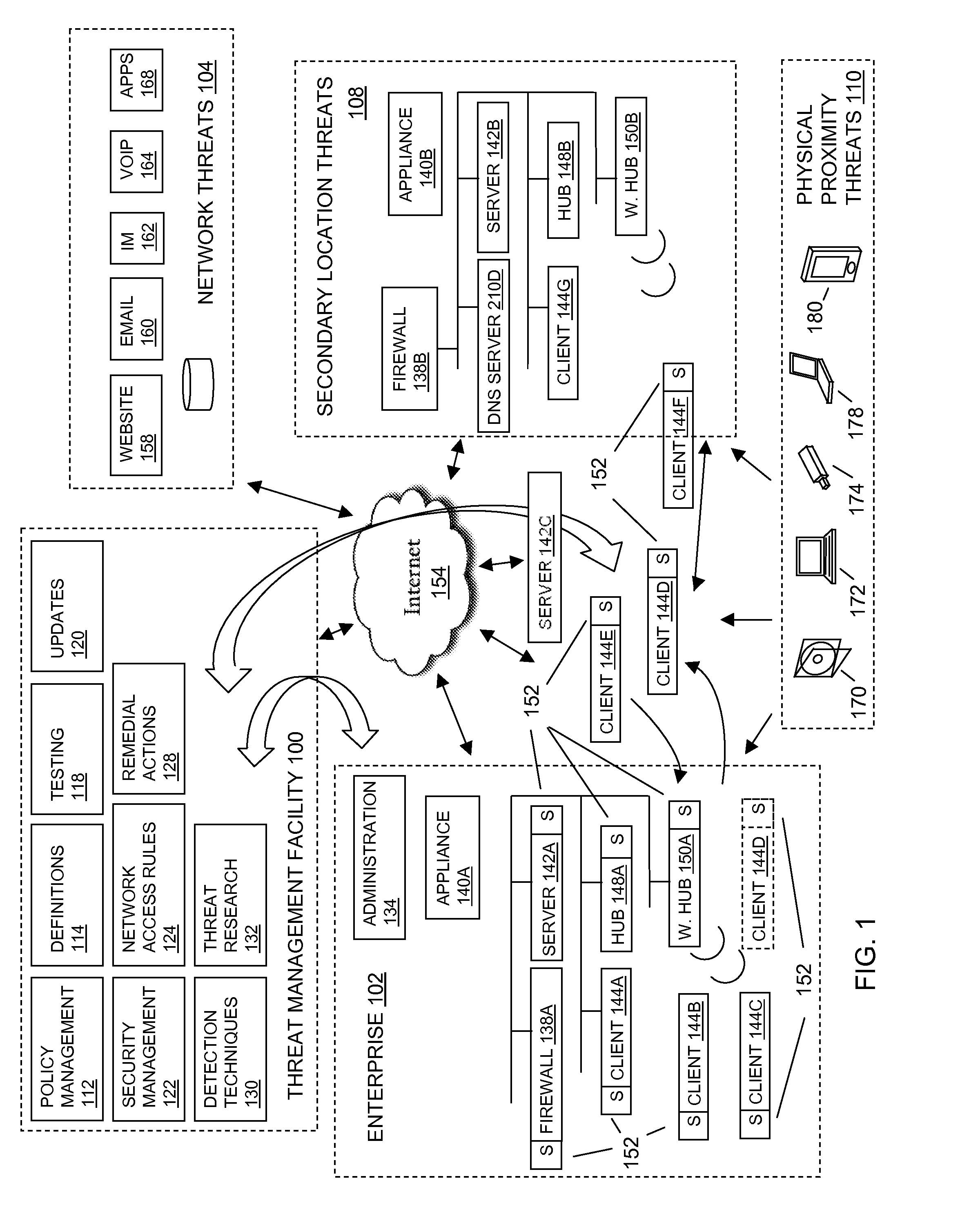Method and system for detecting restricted content associated with retrieved content
a content and restricted technology, applied in the field of secure computing, can solve the problems of malware having the chance to do any damage, needing to block malware, and unintentionally receiving malware, so as to increase the potential for identifying malware and increase the potential for targeting content. the effect of increasing the chance of malware identification
- Summary
- Abstract
- Description
- Claims
- Application Information
AI Technical Summary
Benefits of technology
Problems solved by technology
Method used
Image
Examples
embodiment 500
[0119]FIG. 5 depicts a flow diagram embodiment 500 for detecting malware by analyzing contextual information and retrieved content associated with the requested content. In embodiments, a client request for content may be received 502, where contextual information from the client request may be saved 504. In embodiments, when the content is retrieved 508, it may be presented, along with the associated contextual information, to a malware detection facility 512. In embodiments, the malware detection facility may be associated with the threat management facility 100.
embodiment 600
[0120]FIG. 6 depicts a flow diagram embodiment 600 for detecting restricted content associated with an electronic file. To describe the flow diagram, reference will be made to FIG. 1, although it is understood that the flow diagram may be implemented in any other suitable environment or system. Further, the process flow embodiment is only an example and must not be taken in limiting sense.
[0121]At step 602 of the flow diagram, an electronic file is presented on a computing facility. The electronic file may be presented to a client based on a client request for a file. In an embodiment, a client in the client facility 144 may request any other client for a file. The client having the requested file may be a machine or a computer system. For example, a client “A” may request a client “B” for the file, and both the client “A” and client “B” may be a part of the enterprise facility 102. In another example, client “A” may be a part of the enterprise facility 102 and the client “B” may be...
embodiment 700
[0136]FIG. 7 depicts a flow diagram embodiment 700 for detecting malware associated with an electronic file. In embodiments, an electronic file may be presented on a computing facility 702, where locale information may be extracted from the electronic file 704. In addition, there may be locale restrictions provided in association with a policy facility 708. The locale information and the electronic file may then be presented to a malware detection facility 710. In embodiments, the policy facility 112 and / or the malware detection facility may be associated with the threat management facility 100.
[0137]Contextual information associated with a client request for content, locale information associated with the client request, locale information associated with the retrieved content, and the like, may be presented to a scanning facility along with the content. In embodiments, the synergy associated the presentation of content along with this information may provide a benefit in the scann...
PUM
 Login to View More
Login to View More Abstract
Description
Claims
Application Information
 Login to View More
Login to View More - R&D
- Intellectual Property
- Life Sciences
- Materials
- Tech Scout
- Unparalleled Data Quality
- Higher Quality Content
- 60% Fewer Hallucinations
Browse by: Latest US Patents, China's latest patents, Technical Efficacy Thesaurus, Application Domain, Technology Topic, Popular Technical Reports.
© 2025 PatSnap. All rights reserved.Legal|Privacy policy|Modern Slavery Act Transparency Statement|Sitemap|About US| Contact US: help@patsnap.com



